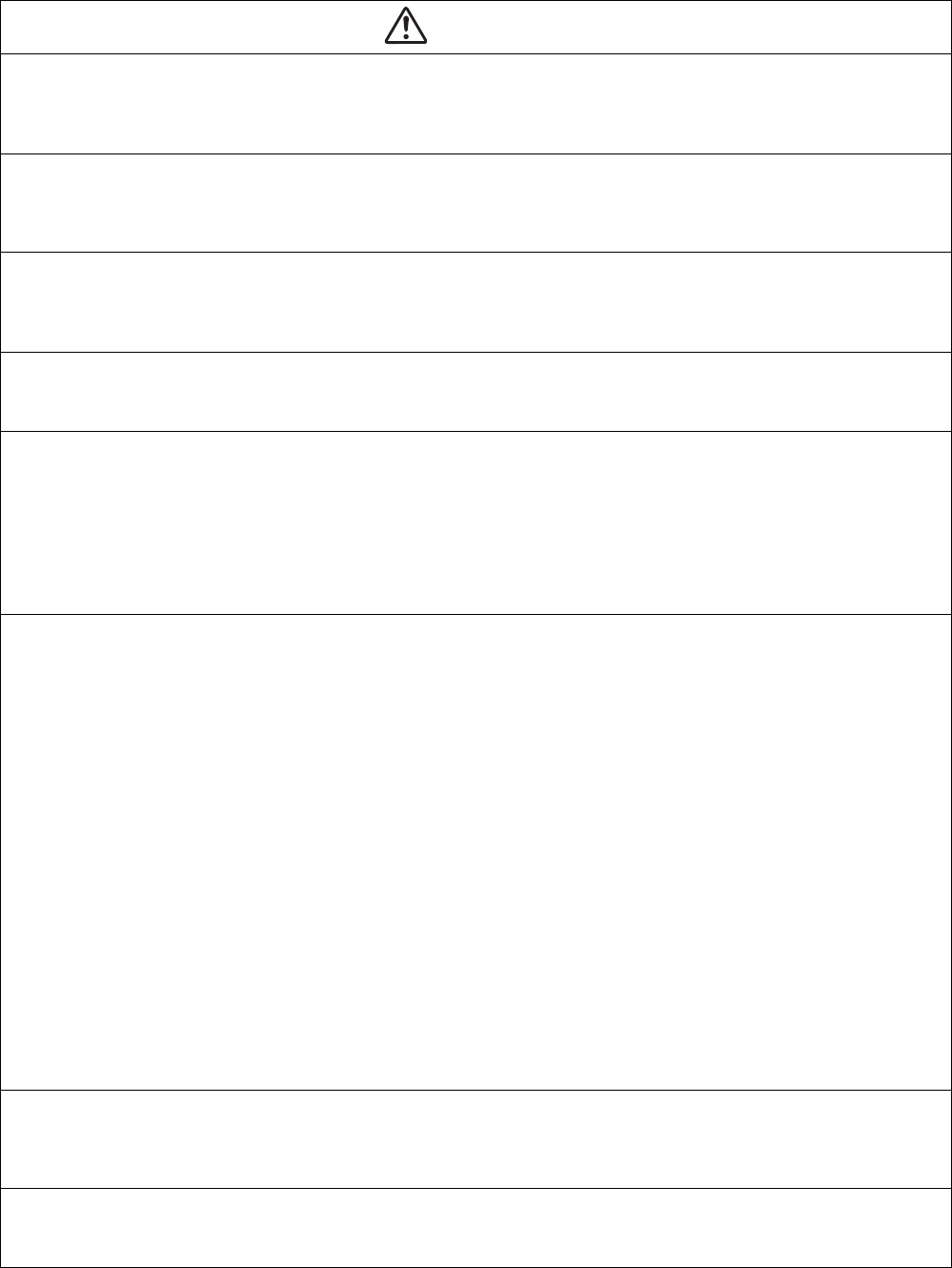
4
Toshiba
<No modification>
Do not modify the unit.
• Do not disassemble or modify the parts also.
• A fire, an electric shock, or an injury may occur.
<Use specified parts>
Use the specified parts (∗) when replacing them.
• Using parts other than specified ones may cause a fire or an electric shock.
∗: For details, see the parts price list.
<Keep children away from unit>
Keep any person (including children) other than service engineers away from a failure diagnosis or repairing place.
• A tool or disassembled parts may cause an injury.
• Advise the customer to keep the third persons (including children) away from the unit.
<Insulation treatment>
After connecting a cut lead with a crimp contact, discharge by facing the closed side upward.
• Connect lead wires with crimping terminals and turn the closed end upwards to avoid exposure to water.
<Watch out for fire>
Observe the following instructions when repairing the refrigerant cycle.
(1) Watch out for surrounding fire. Always put out the fire of stove burner or other devices before starting the repair.
Should the fire fail to be put out, the oil mixed with refrigerant gas could catch fire.
(2) Do no use a welder in a closed room.
A room with no ventilation may cause carbon monoxide poisoning.
(3) Keep away flammable materials.
The materials may catch the fire of a welder.
<Use refrigerant carefully>
Check the refrigerant name to use the tools and members appropriate for the refrigerant.
• A product using the refrigerant R410A has the refrigerant name prominently displayed on its outdoor unit. In
addition, the diameter of the service port is changed from that of the conventional R22 to prevent incorrect filling.
Never use refrigerant other than R410A for Air to Water Heat Pump using R410A. Also, never use R410A for Air to
Water Heat Pump using other refrigerant (such as R22).
• A mixture of R410A with different ones excessively raises the pressure in the refrigerant cycle, leading to an injury
due to burst.
Do not make additional charge of the refrigerant.
• An additional charge when refrigerant gas leaks changes the refrigerant composition in the refrigerant cycle,
causing the characteristics change of the Air to Water Heat Pump or excessive high pressure in the refrigerant
cycle with more than the specified amount of refrigerant charged. This may cause burst or an injury. If the
refrigerant gas leaks, perform refrigerant recovery or other operation to make the Air to Water Heat Pump contain
no refrigerant, and then perform vacuuming. After that, refill the unit with the defined amount of liquid refrigerant.
Never charge refrigerant exceeding the amount specified.
When the refrigerant cycle is refilled with refrigerant, do not enter air or refrigerants other than the specified
refrigerant, R410A.
• A mixture of R410A with air or an inappropriate substance causes excessive high pressure inside the refrigerant
cycle, leading to an injury due to burst.
Check that there is no refrigerant gas leak after the installation is completed.
• If it catches fire of a fan heater, a space heater, or a stove, poisonous gases may be produced.
<Be careful with wiring>
After a repair is completed, be sure to reassemble the parts and put the wiring back to its original state. In addition,
be careful with the internal wiring not to be caught in a cabinet or panel.
• A defective assembly or wiring may cause a disaster at a customer site due to electrical leakage or a fire.
<Check for water leak>
After the repair of a water pathway is completed, check that there is no water leak.
• In using the product, water leak may cause a fire at a customer site due to electrical leakage or an electric shock.
WARNING
+00A09-002_01EN_SVM_ALL_Air_to_Water.book Page 4 Monday, October 5, 2009 2:09 PM


















